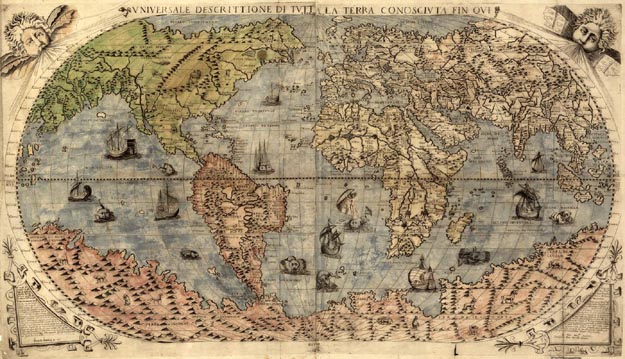
Columbus Cuba.—The following is the narrative of the explorer's visit to Cuba during his first voyage (1492) from his Journal. The Journal was forwarded to the King and Queen, but is now lost. In his Life of Columbus, Ferdinand Columbus drew largely from the Journal, and in the subjoined abstract we have parts of the Journal word for word, with many quotations by another chronicler concerning what Columbus did and said:
 |
| christopher columbus in cuba |
Sunday, Oct. 28—" I went thence in search of the island of Cuba on a south-southwest coast, making for the nearest point of it, and entered a very beautiful river without danger of sunken rocks or other impediments. All the coast was clear of dangers up to the shore. The mouth of the river was 12 brazos across, and it is wide enough for a vessel to beat in. I anchored about a lombard-shot inside." The Admiral says that " he never beheld such a beautiful place, with trees bordering the river, handsome, green, and different from ours, having fruits and flowers each one according to its nature. There are many birds, which sing very sweetly. There are a great number of palm-trees of a different kind from those in Guinea and from ours, of a middling height, the trunks without that covering, and the leaves very large, with which they thatch their houses. The country is very level." The Admiral jumped into his boat and went on shore. He came to two houses, which he believed to belong to fishermen who had fled from fear. In one of them he found a kind of dog that never barks, and in both there were nets of palm-fibre and cordage, as well as horn fish-hooks, bone harpoons, and other apparatus " for fishing, and several hearths. He believed that many people lived together in one house. He gave orders that nothing in the houses should be touched, and so it was done." The herbage was as thick as in Andalusia during April and May. He found much purslane and wild amaranth. He returned to the boat and went up the river for some distance, and he says it was great pleasure to see the bright verdure, and the birds, which he could not leave to go back. He says that this island is the most beautiful that eyes have seen, full of good harbors and deep rivers, and the sea appeared as if it never rose; for the herbage on the beach nearly reached the waves, which does not happen where the sea is rough. He says that the island is full of very beautiful mountains, although they are not very extensive as regards length, but high; and all the country is high like Sicily. It is abundantly supplied with water, as they gathered from the Indians they had taken with them from the island of Guanahani. These said by signs that there are ten great rivers, and that they cannot go round the island in twenty days. When they came near land with the ships, two canoes came out; and, when they saw the sailors get into a boat and row about to find the depth of the river where they could anchor, the canoes fled. The Indians say that in this island there are gold-mines and pearls, and the Admiral saw a likely place for them and mussel-shells, which are signs of them. He understood that large ships of the Gran Can came here, and that from here to the mainland was a voyage of ten days. The Admiral called this river and harbor San Salvador.
Reposted From Son of the South

.jpg)




